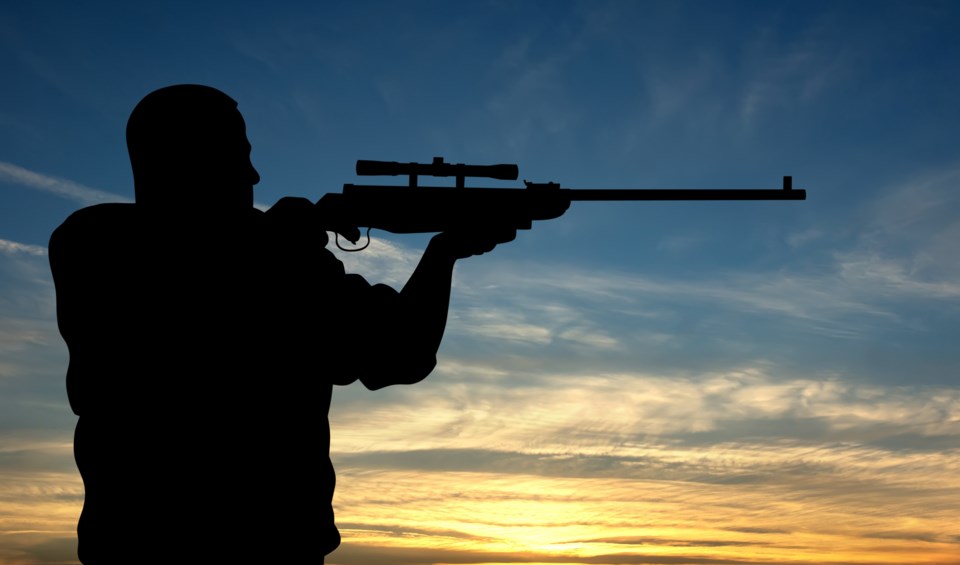This article, written by R. Blake Brown, Saint Mary’s University, originally appeared on The Conversation and is republished here with permission:
The alleged murder of three people by teenage suspects Kam McLeod and Bryer Schmegelsky has again highlighted the devastation that can be wrought by firearms in the wrong hands.
Canadian history is now littered by mass shootings committed by young men such as the 1989 Montréal Massacre, the 2017 Québec mosque attack and the Toronto Danforth shooting in 2018.
These incidents raise the troubling question of how some young men incorporate firearms into their understanding of themselves. The connection between masculinity and firearms in youth is not new nor happenstance.
Generations of men grew up hunting and using firearms in rural areas. However, as I’ve shown in my book Arming and Disarming: A History of Gun Control in Canada, the connection between young men and guns was also shaped and encouraged in the past by governments and businesses with the result that the relationship became ingrained and difficult to break.
Firearms and masculinity
In the 19th century, advances in technology improved the capability of firearms. Smooth-bore, muzzle-loaded weapons were replaced by breech-loaded, rifled firearms that incorporated magazines capable of holding several rounds of ammunition.
Advocates of rifle shooting in the late 1800s believed that such guns provided citizen-soldiers with the firepower to withstand attacks by numerically superior enemies. They made analogies between modern riflemen and historic English longbowmen, and said Canadian men had to develop acumen in rifle shooting if the country was to support the British Empire.
Rifle shooting was also believed to have the added benefit of mitigating the damage done by the sedentary lives of many urban boys. Shooting was an opportunity for youth to take part in a manly outdoor activity.
Training young men to practice with rifles thus became a goal of Canadian governments. Politicians funnelled resources to encourage shooting by organizations like the cadets.
Guns for boys
Businesses also encouraged youth to shoot. For example, by the late 1800s the Daisy Manufacturing Company began producing repeating air rifles that fired using compressed air without chemical propellants. Retailers often described or portrayed such guns as toys. A Victoria, B.C. retailer sold a variety of military toys in 1897, including Daisy air rifles.
Youth could graduate from air rifles to more powerful arms, especially .22 calibre rifles. A number of companies produced such firearms, the small size of which contributed to the sense that they could be safely handled by young people. Such guns were also inexpensive. For instance, Eaton’s sold .22 calibre rifles for as little as two dollars in 1899.
Businesses actively marketed .22 calibre rifles to boys and youth. They often named and described the guns with the intention of appealing to young people. Eaton’s called the Stevens .22 “Little Scout” a “splendid little rifle for boys or youths.”
The J. Stevens Arms & Tool Company of Massachusetts consistently targeted youth in Canadian advertisements. In 1902, the company portrayed boys shooting and recommended some of its models for “younger shooters.” The Ross Rifle Company also marketed a .22 calibre “cadet” rifle, describing it as a “splendid arm for training boys or men” that was “perfectly safe.”
Retailers employed the ultimate symbol of consumer society to sell guns. Toronto’s Charles Stark & Co. suggested in 1904 that there was nothing “nicer for a boy than a small 22 caliber rifle” at Christmas, while in 1910 Eaton’s listed air guns and small rifles as desirable Christmas “Gifts for Lively Boys”.
Businesses promoted the role of guns in bringing together father and son, allowing for bonding and the transfer of wisdom regarding how to be a man. Shooting was a way for a father to instill manly qualities, such as independence, self-sufficiency and an ability to protect personal property.
After the First World War, the marketing of toy arms, air guns and small calibre rifles to boys and youth continued. Hollywood films encouraged a celebration of gun-toting gangsters. By the 1930s, retailers marketed air rifles and toy guns with advertisements drawing on the cowboy craze that swept North America. Toy weapons allowed boys to celebrate alleged cowboy values, such as rugged manly individualism. After the Second World War, guns remained a staple part of Canadian toy catalogues.
Many young men today continue to target shoot and hunt with firearms (and many more use guns in the gaming world). The vast majority do so safely and responsibly.
However, North Americans have seen again and again what happens when even a tiny percentage of young men erroneously see firearms as a way to solve their problems.
R. Blake Brown, Professor, Saint Mary’s University
This article is republished from The Conversation under a Creative Commons license. Read the original article.
